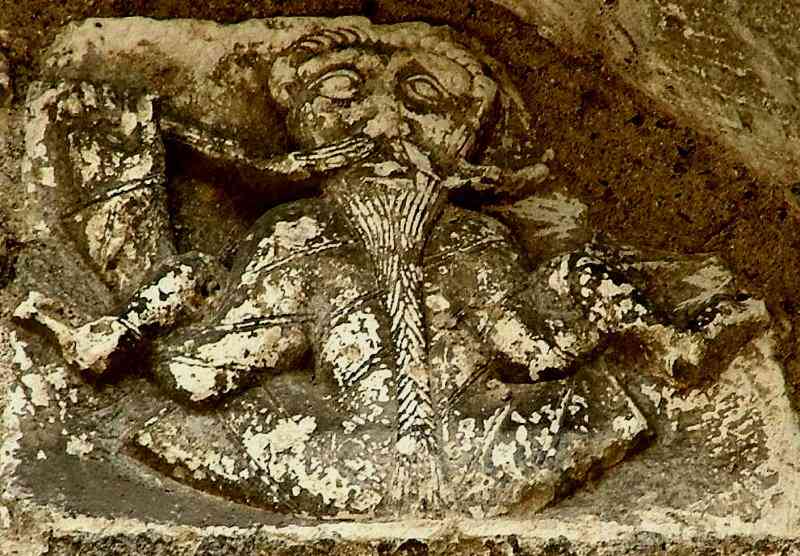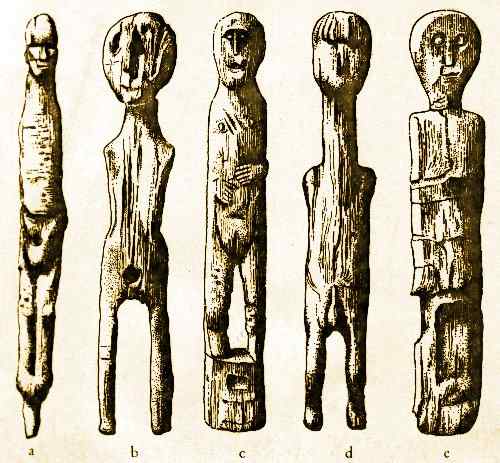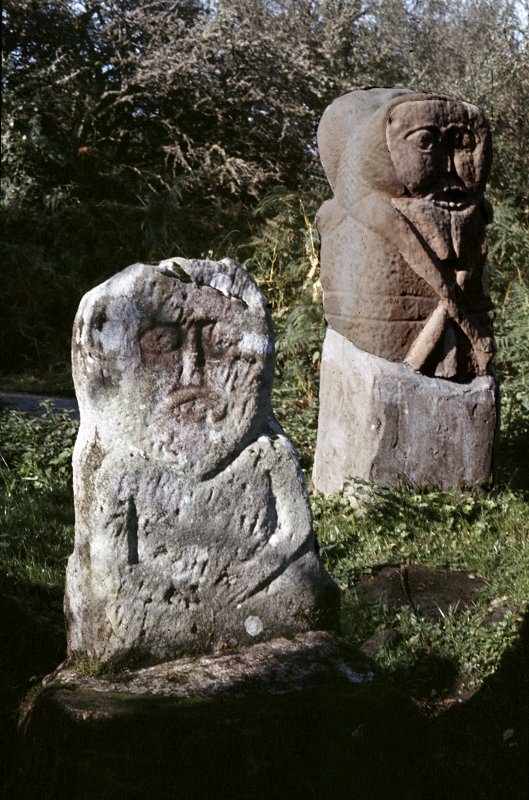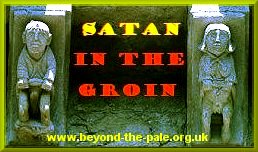|
Caldragh graveyard, These two figures are famous, and appear in almost every illustrated
book on 'Celtic' art. Their dating has been much discussed,
but they are likely to be no earlier than the 8th century, and could
be as late as the 12th.
Compare the Lusty More figure with one on an early 12th century font at Cleckheaton in Yorkshire. It is repeatedly claimed without a shred of evidence that sheela-na-gigs are survivals or regnerations of Celtic cults - but no Celtic paradigm has been found, neither in stone, nor metal, nor wood. The nearest antecedents are the archaic 'Baubo' figurines of the Eastern Mediterranean. Moreover the Celts (especially the Irish) were obsessed with the phallus rather than the fertility-goddess or the vulva, as the phallic stones and gateposts of Ireland attest - notably the magnificent Turoe Stone. Below are drawings of small wooden figures from the British Isles and France. For more pictures of these two sculptures go to www.irishmegaliths.org.uk/zCaldragh.htm. |
Compare the figure on the right with a male moustache-pulling acrobat
on the 12th century church
at Bussières-Badil in Dordogne, France.

 |
from (a) Shercock (Cavan) Ireland All these figures are stiffly upright with none of the lewdness of the sheela-na-gigs and none of the earthy and often witty plasticity of the Romanesque carvings. It was originally thought that the holes in the Shercock and Dagenham figures might have been sockets for penises or even dildoes, but this has by no means been established. Hundreds of wooden figures (including representations of animals and internal organs) have been found in France, notably at the source of the river Seine. drawings by Dr Morna Simpson |
Compare with a Merovingian (7th century) buckle-plate from Picardy.


